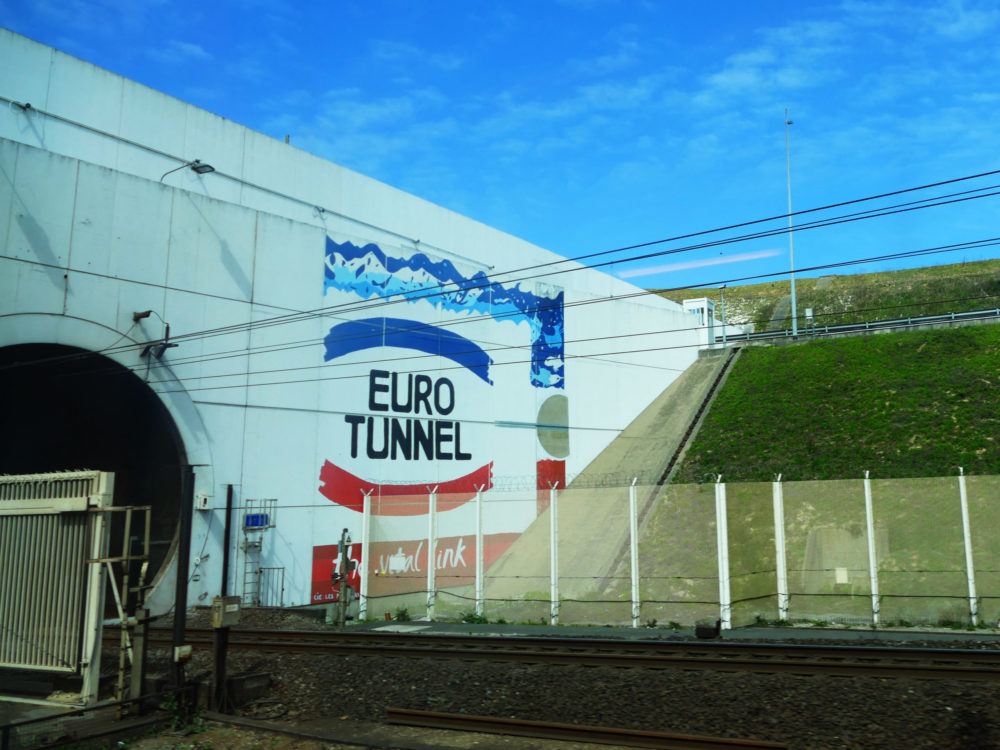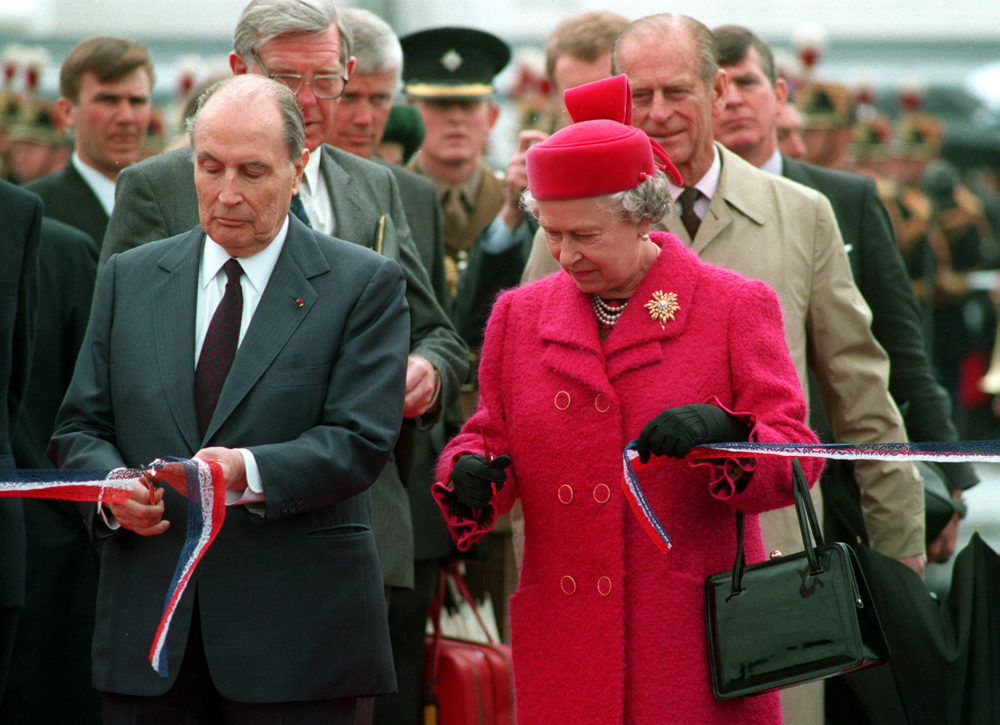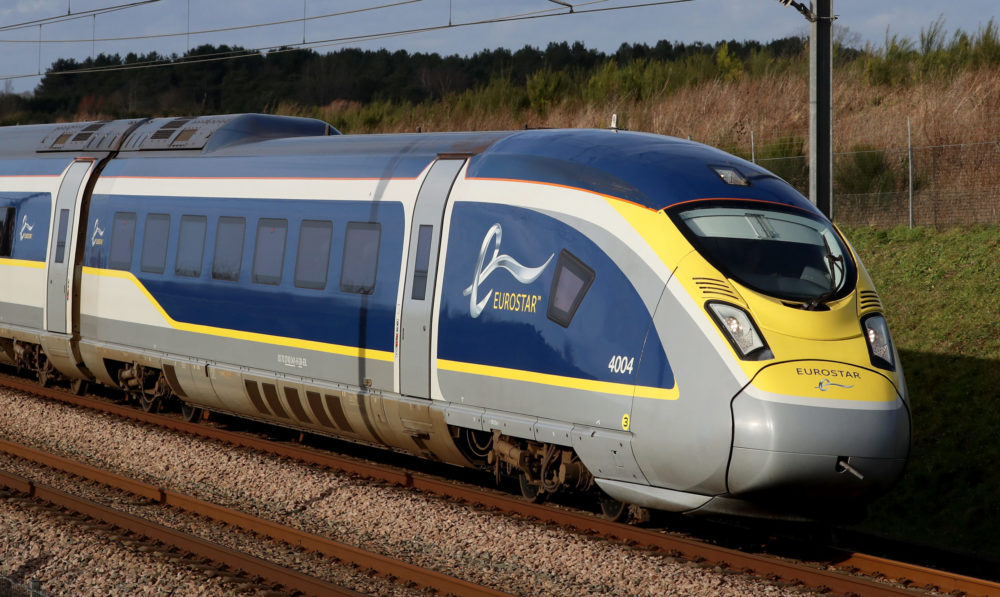The Channel Tunnel and Wales 30 years on

Professor Stuart Cole, CBE. Emeritus Professor of Transport Economics and Policy, Prifysgol de Cymru / University of South Wales
Thirty years ago this month, the late Queen Elizabeth II and President Francois Mitterrand opened the Channel Tunnel between France and Great Britain.
It was the finale to a series of tunnel proposals over nearly 200 years.
All the previous schemes had military invasion objections. However, it was financial viability which ended each of the plans as was nearly the case on several occasions for the current tunnel.
Planning
The plans for the world’s longest railway tunnel were first put forward in 1802;
The present scheme began with a government White Paper put before the Westminster Parliament in 1963.
A tunnel was preferred to a bridge as the geology was suitable, it would be weather / wind proof and not impact on the busy shipping lanes in the channel.
The tunnel was considered too long for effective internal emission control on road vehicles so cars, lorries and coaches would be loaded onto trains (Le Shuttle)
It would also be sited on the 1882 planned route between Shakespeare Cliff, Folkestone and Sangatte.
Financial position
Then work began on the fixed link in 1975 but there were financial obstacles which halted the work.
Eventually, the 1985 invitation to tender was won by the Trans-Manche Link (TML) consortium at an original price of £2.6bn rising to £4.7bn (£17bn in 2023 prices) by completion – one might say a reasonable increase when considering the cost rise for HS2.
Despite rising costs many major banks had invested hundreds of millions of pounds and were unable to withdraw from the project There were several times when the consortium approached bankruptcy. The late Sir Alistair Morton, chairman of the tunnel company, told me that ‘we are where we are. Stop now and the financial crash will be unprecedented’.
The French government continued its financial involvement. Margaret Thatcher’s Tory government insisting on a private-capital-only scheme (supported by Treasury civil servants) made an absurd decision not reinvest despite Britain being the country to benefit the most.
Technical Issues
The project was technically sound despite problems as with any major construction project. There was a 1980’s cartoon showing the British working in feet and the French in metres! There were occasional fires emanating from vehicles not the tunnel itself and safety was paramount in the construction with evacuation procedures (in which I took part) tested during 1993.

Rising costs required a smaller tunnel diameter so that train speed within the tunnel was limited to 100 mph compared with the original plan of 200 mph matching the speed of the then developing French TGV and Eurostar trains outside the tunnel.
Between January and July 2015 Eurotunnel statistics showed that 37,000 illegal immigrants were intercepted. Tightened security measures moved many into using small boats instead.
Market competition
It was suggested that Eurostar passenger trains would never succeed as they were in competition with European aircraft services with their shorter journey times and low fares. However, Eurostar followed Virgin Trains in applying market price competition and segmentation to successfully compete.
In 2007 I put this to the test in return journeys between Cardiff and Paris. The train price was £289; plane £244. Travel time: air five hours; train 7 hours but in comfort and with lunch and drinks enroute.
Eurostar has become a passenger success story to the extent that three companies – Virgin (UK), Evolyn (Spain) and Heuro (Netherlands) – are applying for licences. And direct services (or one change to Thalys trains) now operate from London to Paris, Brussels, Amsterdam, Berlin and to southern France.
Economic impacts
Cymru was, until Brexit, a key part of the land-bridge between Ireland and mainland Europe. The tunnel strengthened this link. The cross-channel journey time for vehicles reduced from 2.5 hours to under one hour; loading time was reduced with eight loading gates on each train compared with two per ferry and the cross-channel journey was not weather / dependent.
Railways finances improved at the expense of airlines and ferry companies though freight cost savings are now negated somewhat by post – Brexit delays.
Regional Eurostars
As the tunnel project developed, £320m was invested in rail infrastructure with new rail connections and depots. Ultimately, only HS 1 from the tunnel to St Pancras Station and currently HS 2 between Birmingham and London were built.

The regional Eurostar plan provided for direct services between Paris and Cardiff (and possibly Swansea); with Paris to north Wales operating via services to Manchester bringing economic benefits for Cymru Wales as occurred in southern France. Wales would have been on the international high-speed rail map. They were prevented by:
- The privatisation of British Rail made contractual arrangements difficult.
- The BR subsidiary European Rail Services, the intended operator of Regional Eurostar, was taken over by a private company, London & Continental Railway. However, passenger number reassessment was far below the initial prediction and by 1998 regional Eurostar financial viability was in doubt.
- Failure to electrify the north and south Cymru Wales main lines meant Eurostar trains could not operate there. HS 2 was expected to revive the idea of a northern England Eurostar with connections into north Cymru Wales, but HS 2 was dropped.
- Failure to build the 2010 HS 3 proposal (in which I was involved) to build a new high-speed line between London and Bristol / Cardiff. This was part of the London Heathrow Terminal 6 proposal for a Severn-side airport with 200 mph train operations form South Wales to major European cities.
- Avoiding central London would lose considerable business with a link to south Wales via the congested West London line. Ironically, the HS 2 services will now terminate there.
- Even Virgin Trains (who operated London – north Cymru Wales rail services) dropped their ‘Eurostar’ proposal following doubts on commercial viability.
- Passport control facilities at Cardiff or Holyhead (with connections to Ireland) were incorrectly deemed difficult to introduce.
A House of Commons Transport Committee report correctly showed all of these were possible to overcome.
The benefits were lost through the UK government’s determination not to provide government investment and revenue support to enable the financial (particularly revenue) position to be contained in the early years.
The Welsh phrase ‘Diwedd y gan yw’r geiniog’ sums up that money is the final arbiter and proved the end of regional Eurostars and the benefits they would have brought to Cymru Wales.
Support our Nation today
For the price of a cup of coffee a month you can help us create an independent, not-for-profit, national news service for the people of Wales, by the people of Wales.








The job of the Sec of State for Wales should have been to bring those benefits to Cymru…
What useless creatures they turned out to be…
A tunnel under Le Manche is something that still makes xenophobe Tories shudder, so making the project deliver genuine transcontinental reach was never uppermost in their silly heads. Imagine catching the train at a new station in Canol Mon straight through to the tunnel and on to Lille and then on to say Milan. A really bright plan would have one route to the tunnel avoiding London thus reducing the congestion that inevitably happens in the Big Smoke.
Has Napoleon gone ? No one told me…
The ‘Forth Dimension’ is strong in Cymru, the landscape still bears the headlines from other wars and invasions in silhouette…
The A470 time machine…
Lack of investment from the tunnel to and within Wales was always on the cards. If it doesn’t involve London or the south east of England the enthusiasm was just not going to be there. As an independent country hopefully we’ll have far closer economic ties with the EU and our biggest export country will undoubtedly be Ireland and possibly an independent Scotland too. The three nations finally have to fully emerge from the English shadow. Yes, we can’t ignore or reduce our trade with England, not possible anyway, but I suspect that trade will decline with time if England… Read more »